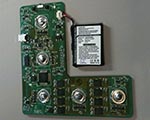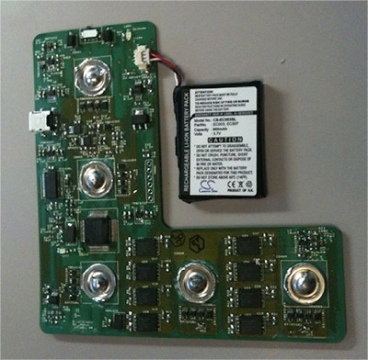« Innovation in Business Story
Ultra Low-Power Microchips Set to Revolutionize Healthcare
Breakthrough:A small wearable ECG monitor that runs on very little power and could replace cumbersome medical equipment. This major advance is made possible by the development of low-power microchips.
Business:
Microsystems Technology Laboratory at Massachusetts Institute of Technology, United States
The Story:
 Scientists from MIT look set to revolutionize medicine by creating biomedical devices that run on very little power and have the potential to slash the sometimes exorbitant costs of healthcare. A team from the institute’s Microsystems Technology Laboratory (MTL) has developed a low-power wearable ECG monitor that could replace the bulky and unwieldy devices that are currently used to monitor heart patients.
Scientists from MIT look set to revolutionize medicine by creating biomedical devices that run on very little power and have the potential to slash the sometimes exorbitant costs of healthcare. A team from the institute’s Microsystems Technology Laboratory (MTL) has developed a low-power wearable ECG monitor that could replace the bulky and unwieldy devices that are currently used to monitor heart patients.In the same way that the microchip transformed the electronics industry, making possible such devices as laptops, PDAs, and digital watches, so some experts believe it will now transform medicine.
“Microelectronics have the potential to reduce the cost of health care in the same way they reduced the costs of computing in the 1980s and communications in the 1990s,” says Dennis Buss, a visiting scientist at MIT and former vice president of silicon technology development at Texas Instruments.
Low-Power Computer Chips
The MIT scientists are designing tiny ultra-low power chips that could be used in a range of wearable or implantable monitoring devices that would not only diagnose heart problems but also keep an eye on patients with Parkinson’s disease. The technology might also be able to predict seizures in epileptic patients.
Ultimately the plan is to use a chip as the foundation of a device that monitors a number of vital signs such as blood pressure, heart rate, breathing and temperature. For now though, the focus is on monitoring and measuring the heart.
Monitoring Heart Beats
Currently patients who have survived a heart attack or who may have cardiovascular disease undergo a battery of tests including MRI and CT scans and ECGs. But according to Collin Stultz, an MIT associate professor of electrical engineering and health sciences and technology “all of these tests are done in contrived settings.”
What cardiologists want in addition is realistic information as people go about their day to day activities.
Therefore cardiac patients are sometimes asked to wear a Holter monitor for a day or more. The device consists of a number of electrodes which stick to the chest, and a bulky battery pack worn at the hip. It continuously records a person’s heart rhythms, but it doesn’t have sufficient memory to store a lot of data.
The neat thing about MIT’s innovation is that the small L-shaped invention (about four inches along each side) sticks to the chest and has no external wires. It can also store up to two weeks of data in flash memory and only requires two milliwatts of juice. Scientists are hoping they can one day construct chips that will harness energy from the body so batteries will no longer be needed.
At the moment the research team has a working prototype and plan to start testing the device in healthy patients in the spring (2010). If this is successful trials in patients with cardiovascular disease will follow.
Future Directions
This major biomedical advance has some scientists almost breathless with excitement and anticipation about what the future may hold. Dennis Buss believes that we can look forward to advances that we can’t even think of at the moment.
“We will be using electronics in medical ways we don’t even conceive of yet,” he says. “When we started using cell phones, we had no idea we would be playing games and watching TV and surfing the Internet the way we do now.”
Next Story »
IdeaConnection: What Can we Solve for You?

